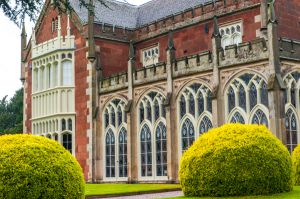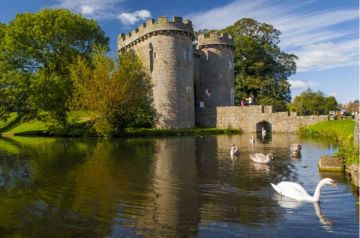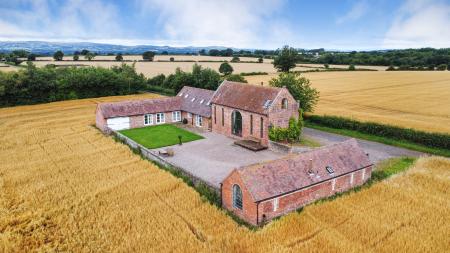
Longner Hall is built of red sandstone with grey ashlar dressing under a plain tile roof. The house is laid out on an irregular L plan, consisting of a main block in two ranges, with a gabled cross-wing and a projecting service wing.
The Burton family has lived at Longner since the 14th century, and the house is full of family treasures dating back to the medieval period. One of the more peculiar historic features is the memorial of Edward Burton (d. 1558), who was refused burial in St Chad's church in Shrewsbury because of his Protestant faith. There is a fascinating inscription around the memorial which reads in part:
'...Was it for denying Christ
or some notorious fact
That this mans body Christian Burial lack't?
Oh no! not so his faithful true profession
was the chief cause
which then was held transgression...'
The park was laid out sometime before 1786, but it was not until 1803 that John Nash was called in to rebuild the earlier house on this site, at the same time as he was working on nearby Attingham Park (National Trust). At around the same period Humphry Repton created a 'Red Book' for a landscape garden; essentially a book of design ideas. Repton worked closely with Nash and was also designing the parkland at Attingham.
The Hall was extended and altered in 1838 by the architect Edward Haycock for Robert Burton, a wealthy banker and Mayor of Shrewsbury.
The Burton family still reside at Longner, and the house and grounds are generally open to visitors from Spring through Summer. Please check with the property before making a trip for exact times.






 We've 'tagged' this attraction information to help you find related historic attractions and learn more about major time periods mentioned.
We've 'tagged' this attraction information to help you find related historic attractions and learn more about major time periods mentioned.




